Note: This review was originally written in march 2017. A few comments were added by the end.
It took me a while to understand Valkyria Chronicles. In fact, I have failed to try it during the entire previous generation, relegating the game to my backlog for many years. It was only after the remastered version came along for the Playstation 4 that I finally decided to insert that damn disc in the videogame and see what it was really about.
Once again, I am deeply sorry, oh great RPG Gods. I can sense my heresy of relegating this game for so long. You see, this is not simply a great tactical RPG game. No, this is a masterpiece of its genre and perhaps the very best of this rare group to be released in the last generation. Valkyria Chronicles is also new, fresh, and with ideas that very few have tried and achieved with such mastery.
For those who have no clue about the game I could resume it to an anime-inspired take on World War I, with tanks, infantry, trenches, grenades, and highly challenging combat scenarios. It’s light on its presentation with the water-colored and pencil strokes design, but it its heavy on game terms just enough for the experience to be challenging and lasting. If you enjoy tactical RPGs, you have here one of the very best games ever released of this genre.
Nope, it’s no exaggeration
Valkyria Chronicles, unlike most other tactical RPGs released in the east, is not bound by hexes, squared-grids, and dedicated units. Instead, it feels much more like a boardgame, giving focus on leadership instead of a unit’s individual power and adding some level of “action” to the fray. Such elements make for a game that is, at the same time, a brain-twisting tactical effort and an tension-filled experience of moving your troops around. It is a rare combination on its own, but the game offers more than that.
Out of combat, it works like a visual novel of sorts, but unlike what the typical otaku-oriented games are. Instead of fitting the shoes of a boring guy and hitting on girls, the game picks the group of people from the seventh platoon of the Gallian Milita forces, known as Squad 7. Although the squad is led by Welkin Gunther, the tale of the game goes much further than just exploring his point of view. You get a lot from Alicia, Rosie, Largo, and Isara, as well as plenty of participation from higher-ups of the Gallian Militia and also some foes from the evil Empire.
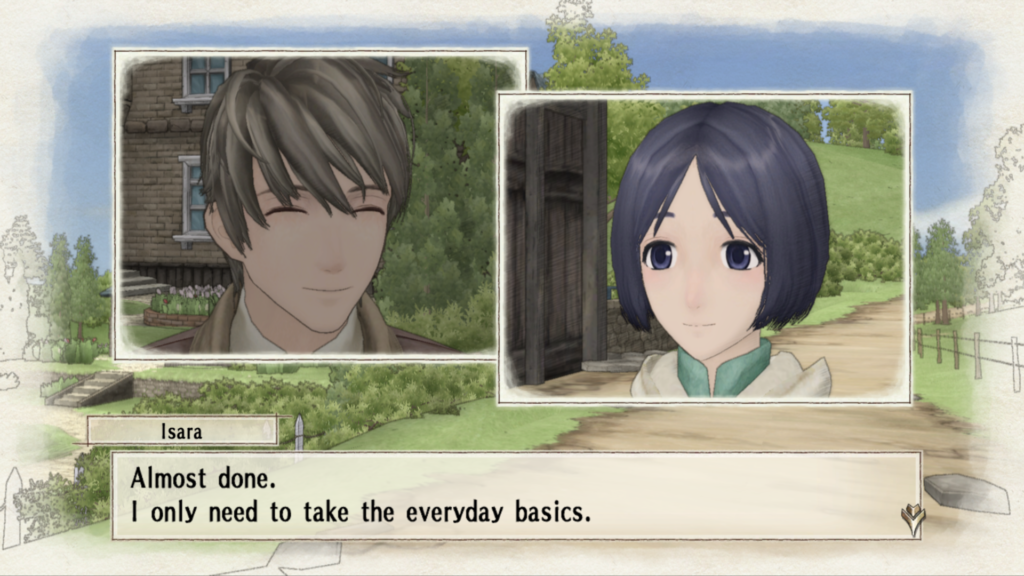
The tale itself is presented in short skits, which you can select from a book-styled menu as if in the diary from a soldier coming back from the war. Most skits offer close-ups on the cast and their dialogues, but some are full scenes where the most important stuff happen. Everything in this game is gorgeous though, with every character model and background making you feel as watching an anime, and a damn great one with amazing coloring style.
It’s hard to find anything like it in the industry. Of course, we had Final Fantasy Tactics and Tactics Ogre back in the day, as well as some masterful non-turn based tactical games around, but few of them mixed turn-based strategy, a small degree of action, and superb storytelling as in here.
The combat
The story is about Squad 7’s effort to protect the neutral Gallian state amidst the war between the Federation and the Empire, but what will really keep you playing is the combat where you put said troops of Squad 7 to test.
As I mentioned, the general structure of combat feels more like a boardgame than traditional turn-based tactical RPGs of old. Instead of rotating between your units in initiative order, you have a phase to command all of them as many times as you like. You get command points to use, which allow you to move a unit and make an attack with them. If you wish, you can spend command points to command the very same unit multiple times instead of picking others, giving you a widely different set of strategy.
Of course, ordering around the same unit multiple times in your commanding phase has its drawbacks, as some attacks have limited uses and movement is hindered with each consecutive action. In the end, it is a game to ponder whether it is best to move the same unit twice or more to put it deeper into enemy lines, or if it is better to move everyone in tandem to attack with full force.
When you move a unit, however, it is not simply a matter of deciding where you go on the map or grid. Nope. You actively move your unit there, finding enemy units as you turn around a corner or reach higher ground. You can stop your movement to attack, but while moving around you may be targeted by interception fire from enemies’ units. Yeah, it’s dangerous to walk around in the middle of foes, you have to find paths to stage ambushes or smartly make use of the game’s different units to outsmart your foes.
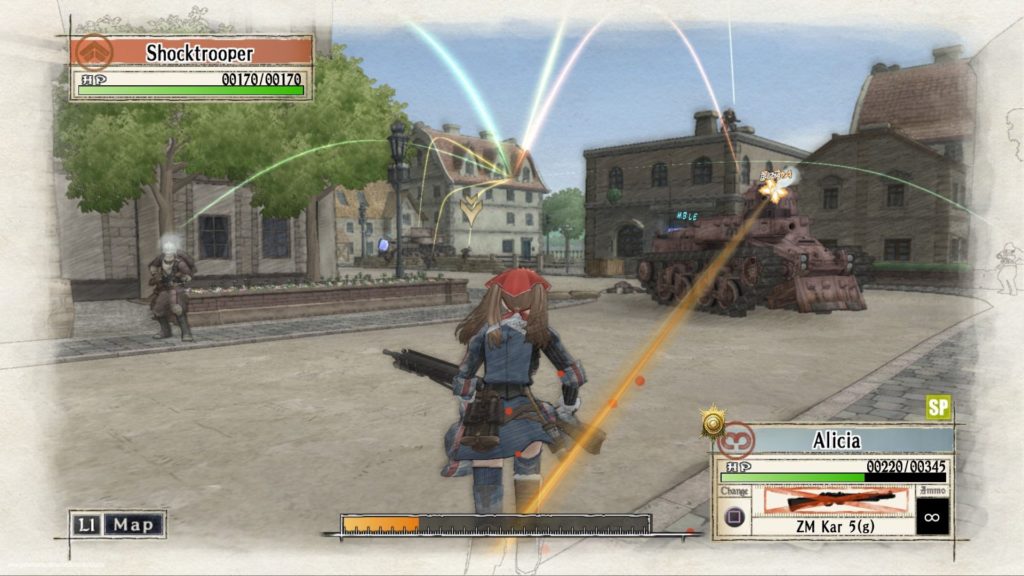
The classes
The different units in this game, which translates as the game’s classes, are the scout, the shocktrooper, the lancer, the engineer, and the sniper. Each with a different set of movement capability, weapons, and special attacks. The scouts can move longer distances, have decent firing range and can discover enemy units easier, yet they are frail and are better used while crouching behind sandbags or hiding in tall grass. The lancers are bulky armored soldiers who move slowly, but are equipped with powerful missile-launchers used to destroy tanks and structures. The shocktroopers are not as sturdy as lancers, but they can take a lot of shots before getting close to enemies and hitting hard with their machine-guns or flame-throwers. The engineers are very squishy, but they have decent movement and can resupply grenades and limited ammo to other units, as well as heal others and repair tanks. Finally, the snipers have long range weapons that hit hard, but they are frail as engineers and have very poor interception fire capabilities.
Additionally, the game has tanks. Hell yeah. Tanks are massive beasts in the game, basically immune to regular artillery and equipped with an assortment of weapons such as smoke rounds, heavy machine-gun, mortars, and the classic cannon. You can use tanks as a way to burst into enemy territory, use it as cover for your foot soldiers, or simply as a protective line. It’s your call, and the possibilities are endless.
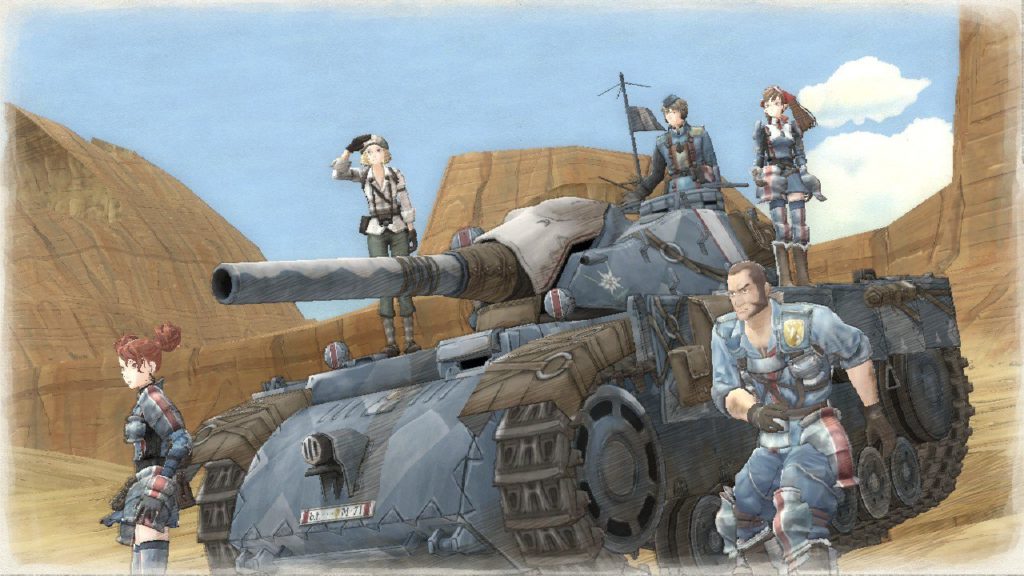
Your phase and the enemy’s phase
The tactical aspect of the game is further improved beyond the classes and tanks and their capabilities. This improvement comes in the form of what the game calls “interception fire”, which does not play during your turn, but during the enemy’s turn. As I mentioned, when you walk around during your phase, the enemies troops may fire upon you if you get in their range. The opposite is valid too.
What this means is that the game also offers a deal of “tower defense” strategy here. The position of your troops by the end of your phase means you get to defend positions during your enemy’s movements. If you place your troops wisely, you may see enemies swarming towards a choke point only to be obliterated by your interception fire.
Yeah, tactical RPG, great visual novel storytelling, some action, and some tower-defense strategy. Valkyria Chronicles does everything with quality too, making each of these elements a well-made effort. It is very rewarding to see your attack doing well, but it may be even more so to see that your troops were well-positioned during your defense phase.
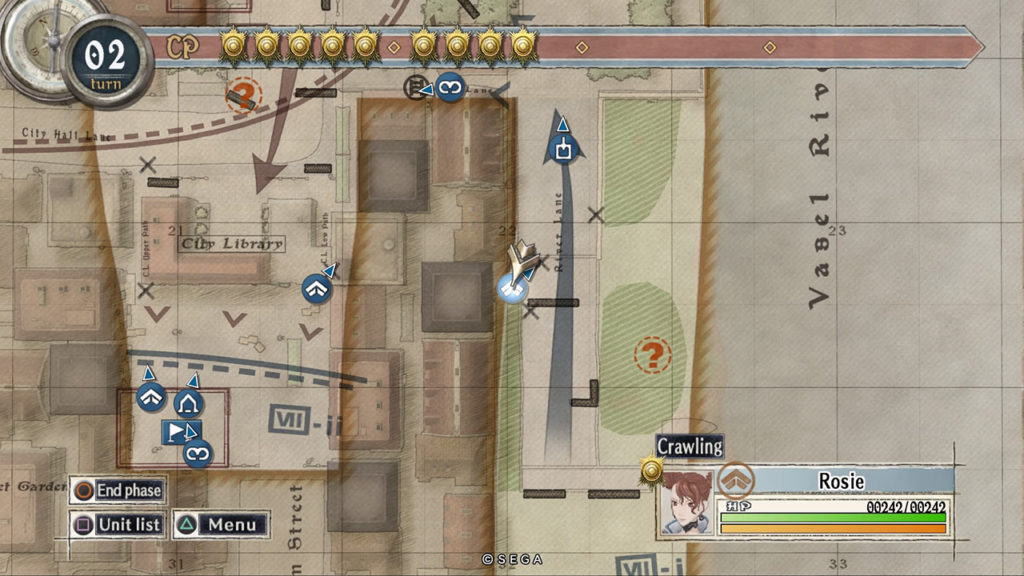
It got content too
The story itself is a great way to experience everything the game has to offer, but it has much more beyond that. Many additional challenging scenarios can further test your troops capabilities, you may want to re-challenge story missions for better rewards or to improve your performance, and the game offers a lot to customize your troops with.
It has unit levels, of course, but also at least three options of each weapon type you can develop, along with tank parts to customize your tanks, and traditional RPG accessories to give a bit more to each character. You can also acquire some enemy’s weapons, which typically are very drastic in terms of min-maxing stats, opening up some new strategies if you choose to use them.
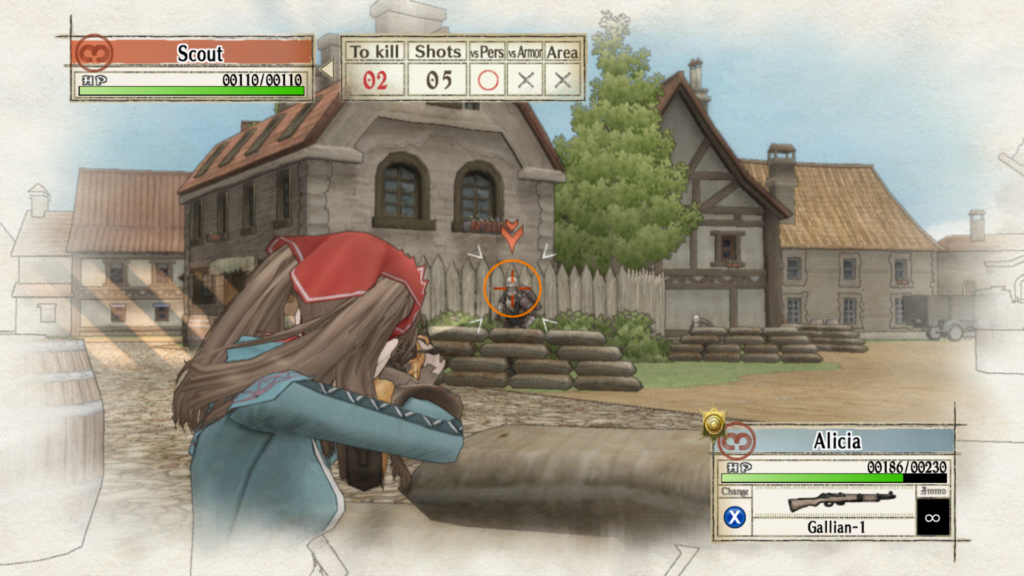
Some of the combat scenarios are also wildly different from the rest, such as in boss battles. While most enemies you will see are composed by units similar to yours (same classes, some varied tank types, turrets, and so on), the bosses are beasts of their own, such as massive tanks with multiple cannons where you can board and throw grenades from close-up, to the unnatural Valkyria which is a deadly foe to face head-on.
It should get more attention
 (4.5 / 5)
(4.5 / 5)
Valkyria Chronicles is an old game today, yet its style and genre make it a game that can still be a blast to play. There is a newer version of it, which is Valkyria Chronicles 4, but really, the original has enough up its sleeves to entertain as much as the new one.
If you enjoy tactical combat, give this a shot. It got some decent reception back in its original release, but I could say it deserved much more than that. Amazing combat, great storytelling, fun characters, fresh ideas, boardgame feeling. Hell, I haven’t found a tactical game to love as much since Final Fantasy Tactics.
Summary
-
Production
-
Content
-
Polish
-
Concept
-
Fun
